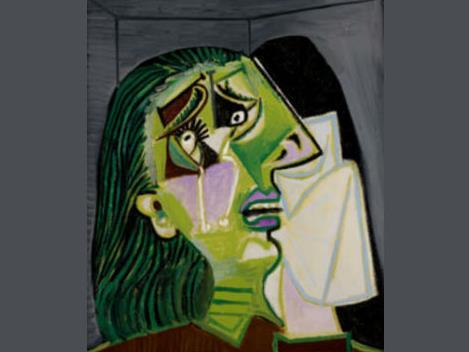Picasso, Weeping Woman, National Gallery of Victoria
The 100 Women of Influence list, produced by Westpac and the Australian Financial Review is designed to recognise women leaders and highlight the important contribution women make in ‘creating a bold and diverse future for Australia’.
The judges, all prominent women and men in business or journalism, have obviously made an effort to select women from a wide cross-section of sectors: there is an embryologist, a soldier, a school principal and a social worker as well as many CEOs, community activists and philanthropists.
But there is not a single artist, performer or creative producer on this list. This absence is particularly striking given the prominent role that women play in the arts sector.
The arts as an influential cultural stream were not entirely ignored. The list names Andy Dinan, founder of Mars Gallery, among the list of philanthropists; Monica Davidson, freelancer and filmmaker, is named as a businesswoman who supports other creative people in running successful freelance businesses and filmmaker Genevieve Clay-Smith is named as a young leader for her work as co-founder of Bus Stop Films, a film business which focuses on inclusion of disabled cast and crew.
No question these are great inclusions and perhaps, given the range of sectors covered by the awards, the judges thought they had represented the arts sector sufficiently. The orientation of the awards is towards business leadership and the influence practicing artists offer is both more abstract and harder to measure.
But the failure to include even one prominent artist, performer or creative producer devalues cultural influence. A powerful song, striking painting or stunning performance can have tremendous enabling power and it is shame the Women of Influence list failed to acknowledge that.
Think how many conversations about women’s bodies were prompted by Patricia Piccinini’s Skywhale last year and the profound effect such a cultural icon can have in shaping the way we see ourselves. Fiona Hall, who will represent Australia next year at the Venice Biennale, speaks for the nation powerfully on the subject of culture and the environment. Emily Floyd, whose Public Art Strategy (the black bird with the yellow worm) is seen by thousands every day on the East Link freeway, has an influence on the urban environment and the psychology of the city.
Singer Jessica Mauboy and actor Deborah Mailman have been highly influential in remaking the image of Indigenous people, with much broader effect than is achieved by social enterprises.
Curator Juliana Engberg, Director of both the Sydney Biennale and ACCA, and Artistic Director Robyn Archer, whose many credits include the Canberra Centenary last year, are both responsible for putting vast programs of works in the public eye, inspiring levels of engagement from audiences in the hundreds of thousands. Liz Ann MacGregor, who oversaw the $53 million makeover of the Museum of Contemporary Art, has changed the turf for contemporary arts in Sydney and Angharad Wynne-Jones, who helped found Chunky Move and is now remaking ArtsHouse, has changed it for performing arts in Melbourne.
Anna Pappas, Chair of the Melbourne Art Foundation, and Anna Schwarz of the eponymous gallery might join Andy Dinan as private gallerists with extensive influence.
Simone Young, who broke down one of the last male bastions in Europe when she became conductor of the Vienna Philharmonic, has to be one of the best girls-can do-anything exemplars that Australia has given the world.
Marion Potts, Artistic Director of Malthouse, is highly influential in the creation of new Australian work and Lindy Hume, Artistic Director of Opera Queensland, is one of the most in-demand directors in the country.
With reading still one of the most popular leisure activities writers like Helen Garner and Kate Grenville have particular capacity to put issues on the agenda. The founders of the Stella Prize, Louise Swinn and Sophie Cunningham, have been highly influential in raising the profile of women writers. The Stella count measures the relative attention given to books by women and men in the review pages of newspapers. It is an example of a small project with tremendous influence, not only on its own sector but on the wider community. On the literary side there are also Melbourne University publisher Louise Adler and Lonely Planet co-founder Maureen Wheeler (with husband Tony), who founded the Wheeler Centre for Books and Writing.
Among young leaders Emily Sexton, outgoing Artistic Director of Next Wave, now at MPavillion is a mover and shaker.
The influence of the ABC on public discourse is profound and the influence of the head of ABC TV Arts Katrina Sedgewick has been illustrated by the recent formation of a specialist Arts Council and a suite of new programming initiatives.
The 100 Women of Influence list is a useful way of recognising important achievers and we cannot expect that all the important women in the arts will be noticed. But we hope next year the influence of the arts will be more strongly represented.





